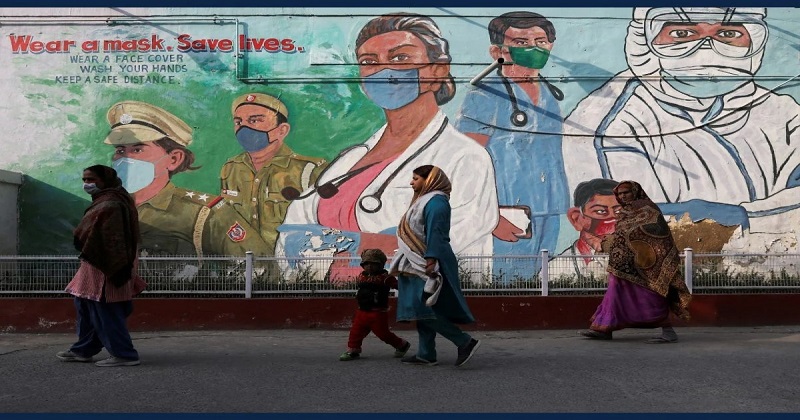
Covid-19-related regulations in India will come to an end on Friday, two years after the Centre announced the installation of limitations following the pandemic breakout, citing a steady decline in cases throughout the nation. According to the home ministry, wearing face masks and upholding social separation standards will continue.
On Thursday, many states sought to end all pandemic-related restrictions, including the requirement to wear face masks. Maharashtra, one of the worst-affected states and West Bengal have stated that all Covid-related restrictions will be eliminated.
In a letter to all state chief secretaries last week, Union Home Secretary Ajay Bhalla stated that significant capacities have been developed for various aspects of pandemic management, including diagnostics, surveillance, contact tracing, treatment, vaccination and hospital infrastructure, over the last 24 months.
The states and Union Territories have also built their capacities and processes, as well as executed their comprehensive particular strategies for managing the pandemic, according to Bhalla, citing a high degree of public knowledge regarding Covid-appropriate behaviour.
‘After taking into consideration the overall improvement in the situation and preparedness of the Government to deal with the pandemic, National Disaster Management Authority has taken a decision that there may not be any further need to invoke the provisions of the DM Act for COVID containment measures’, he said.
On March 24, 2020, the central government published the first instructions and directions under the Disaster Management Act (DM Act) 2005 for the containment of Covid-19 throughout the country, which have since been updated.
Also Read: Actress Losliya Mariyanesan reveals her weight loss journey
As per Bhalla, after the expiry of the existing order on March 31, no further order will be issued by the Ministry of Home Affairs. On the other hand, the instructions of the Ministry of Health and Family Welfare on Covid containment measures would continue to lead the entire national response to the pandemic. Face masks and hand hygiene are among the guidelines.
The MHA has stated that, because of the nature of the sickness, residents must continue to keep a close eye on the situation. In the event of a rise in cases, the Centre has asked states and UTs to take immediate and effective action at the local level, as directed by the Health Ministry. The Ministry of Health’s standard operating procedures and advice for containment measures, as well as immunisation, will be needed to be followed.
The Union Home Secretary had said, ‘I would, therefore, advise all the States and UTs to consider appropriately discontinuing issue of orders and guidelines under the DM Act, 2005 for COVID containment measures’.
Meanwhile, India’s Covid tally jumped to 4,30,24,440 after 1,225 new coronavirus infections were confirmed in a single day, although active cases fell to 14,307, according to the Union Health Ministry. The death toll had risen to 5,21,129, with 28 more deaths. Active cases account for 0.03 percent of total infections, while the national COVID-19 recovery rate remains at 98.76 percent.
Over the course of 24 hours, the active COVID-19 caseload was reduced by 397 cases. The daily Covid positivity rate was 0.20 percent, while the weekly positivity rate was 0.23 percent across the country. On June 23, last year, India’s COVID-19 tally topped the three-crore mark.

Post Your Comments